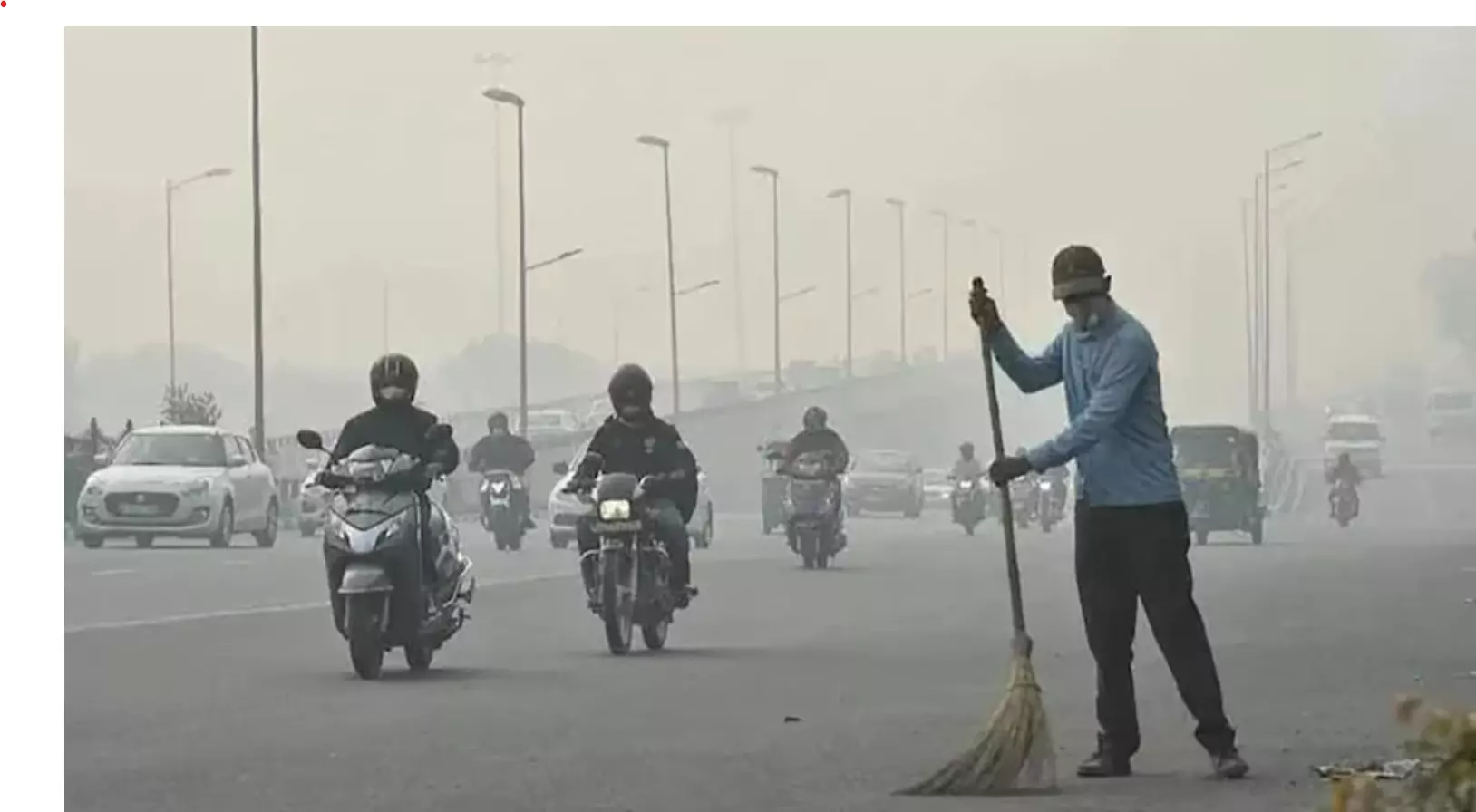An alarming state

The fifth edition of the State of Global Air Report, a comprehensive analysis of global air quality and its health impacts, presents a dire picture of the state of our planet’s atmosphere. For India, the findings are particularly alarming, underscoring the urgent need for effective and sustained action to address the escalating air pollution crisis. According to the report, India remains one of the countries with the worst air quality in the world. The average annual PM2.5 levels, a key indicator of air pollution, have consistently exceeded the World Health Organisation’s (WHO) safe limits. In 2023, the average PM2.5 concentration in India was 58.4 micrograms per cubic meter, significantly higher than the WHO’s recommended maximum of 10 micrograms per cubic meter. This toxic air has far-reaching consequences for public health, economic productivity, and overall quality of life.
The report highlights that air pollution is now the third leading cause of death in India, following heart disease and cancer. It is estimated that over 1.67 million deaths in India in 2023 were attributable to air pollution. This includes both outdoor air pollution, such as that from vehicles and industrial emissions, and indoor air pollution from sources like cooking stoves and heating. Children and the elderly are particularly vulnerable to the health impacts of air pollution. The report indicates a disturbing rise in respiratory illnesses among children, including asthma and bronchitis. Additionally, there is growing evidence linking air pollution to adverse birth outcomes, such as low birth weight and preterm births, which have long-term consequences for child development and health. Beyond the devastating health impacts, the economic costs of air pollution in India are staggering. The report estimates that air pollution-related health issues result in a loss of over 1.3 per cent of the country’s GDP annually. This includes healthcare costs, lost labour productivity, and premature deaths. In economic terms, this translates to approximately USD 36 billion annually, a significant burden on the nation’s economy. The Indian government has initiated several measures to combat air pollution, including the National Clean Air Programme (NCAP). The NCAP aims to reduce PM2.5 and PM10 concentrations by 20-30 per cent by 2024 through a range of strategies, including stricter vehicle emission standards, promoting electric vehicles, and enhancing public transportation infrastructure.
However, the report points out that despite these efforts, progress has been slow and uneven. Many cities have struggled to meet the targets set under the NCAP, and enforcement of pollution control measures remains a significant challenge. The complexity of air pollution, driven by multiple sources and factors, requires a more coordinated and holistic approach. Innovative technologies and solutions offer a ray of hope in the fight against air pollution. The report highlights several successful interventions, such as the use of real-time air quality monitoring systems, which provide crucial data for both policymakers and the public. In Delhi, for instance, the deployment of low-cost air quality sensors has significantly improved the accuracy and coverage of pollution monitoring. Furthermore, advancements in renewable energy technologies, such as solar and wind power, are essential in reducing reliance on fossil fuels, a major source of air pollution. The Indian government’s ambitious renewable energy targets, including achieving 175 GW of renewable energy capacity by 2022, are steps in the right direction. However, these targets must be accompanied by robust policies and incentives to ensure their realisation.
The report emphasises the critical role of public awareness and community engagement in tackling air pollution. Education campaigns highlighting the health risks of air pollution and promoting behavioural changes, such as reducing the use of personal vehicles and adopting cleaner cooking methods, are vital. Grassroots movements and citizen-led initiatives have shown remarkable potential in driving change. In cities like Bengaluru and Mumbai, community-driven air quality monitoring projects have empowered residents to advocate for cleaner air and hold authorities accountable. Such initiatives demonstrate that when informed and mobilised, citizens can be powerful agents of change.
The fifth edition of the State of Global Air Report serves as a stark reminder of the urgent need to address air pollution in India. The health and economic impacts of polluted air are too significant to ignore. While government initiatives and technological innovations are crucial, they must be complemented by sustained public awareness and community action. India stands at a crossroads. The path forward requires a collective commitment to cleaner air and a healthier future. This report should not only inform but also inspire action. The stakes are high, but with concerted efforts, it is possible to turn the tide and breathe life back into our cities.



